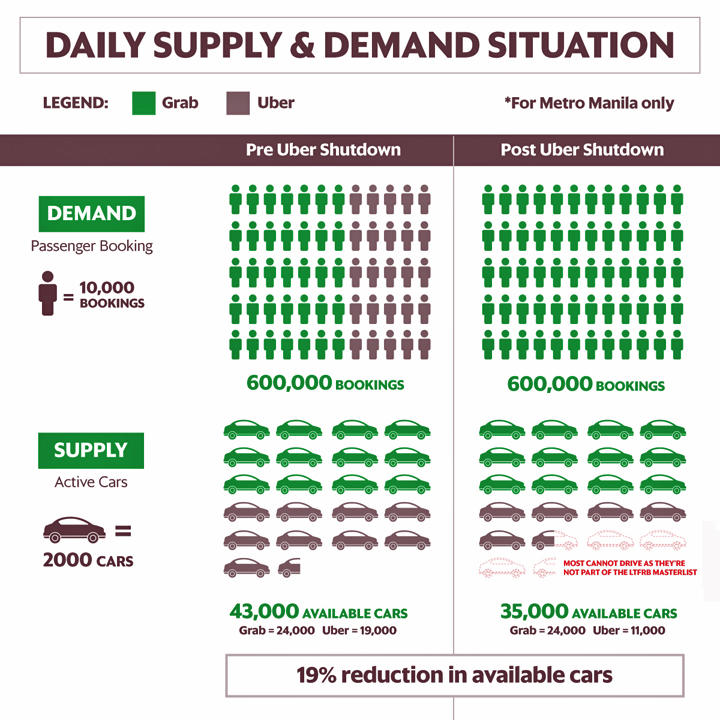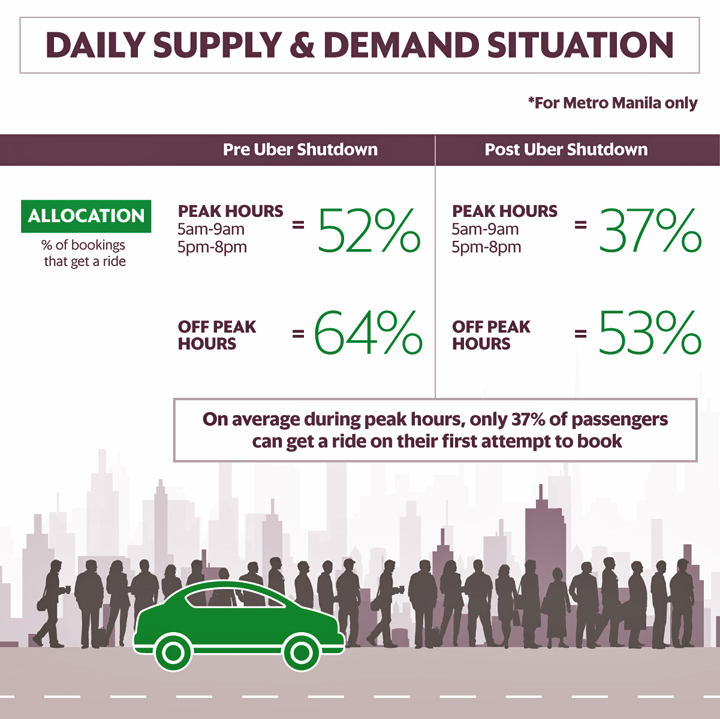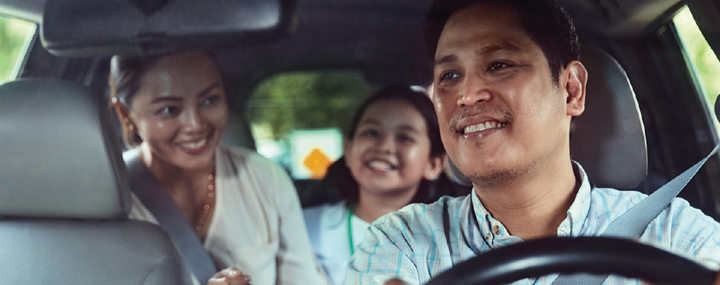When Grab acquired Uber, people thought Grab would have a larger fleet (because the 24,000 from Grab plus the 19,000 from Uber total 43,000 cars). And yet, it’s harder to book a Grab ride. Here’s why: 2,000 Uber cars chose not to move to Grab, and 6,000 are missing from the LTFRB audited TNVS masterlist and so cannot be allowed to operate. That means the 600,000 daily booking requests will have to contend with a 19% reduction in available cars post-Uber-acquisition. Meaning, on average (during peak hours), only 37% of Metro Manila passengers can book a Grab ride on their first attempt to book. That 19% reduction in available cars is the source of the riding public’s stress – it’s hard to book because there are fewer cars available, not because Grab drivers are choosy.
See the infographic below.


“Majority of social media sentiment we monitor regarding the inability to get a ride is due to the perception of choosy drivers, but in reality this is because there are no available cars in the area,” said Grab Country Head Brian Cu.
Grab can’t immediately deploy 6,000 ex-Uber cars
The TNVS supply and demand situation (fewer cars, large booking demand, and undeployable 6,000 ex-Uber cars) is serious according to Cu.
“We need more cars to serve the riding public. We appeal to the LTFRB to allow the displaced 6,000 Uber drivers who are not part of the masterlist to continue driving with their chosen TNC in order to support the demand. With an average of 12 rides a day, this is already an additional 72,000 rides, which can help ease the plight of the riders,” he said.
According to Cu, Grab is prioritizing the on-boarding of the 6,000 unlisted cars to ease the ride-booking stress of the commuting public. But they need the help of the LTFRB and the patience of the riding public.
Both Grab users and Grab drivers are affected
“Driver numbers continue to drop as uncertainty in maintaining sustainable livelihood increases. With the recent suspension of P2 per minute fare, a lot of drivers and operators fear they won’t be able to provide for their families and car maintenance expenses,” said Cu.
While Grab collaborates with regulators to find a solution, Grab is releasing incentives to Grab drivers to increase the productivity of current Grab drivers by at least 15% per day. Grab users are also encouraged, in the meantime, to maximize available vehicles by sharing their ride with other passengers using GrabShare.
Liked this post? Follow SwirlingOverCoffee on Facebook, YouTube, and Instagram.


